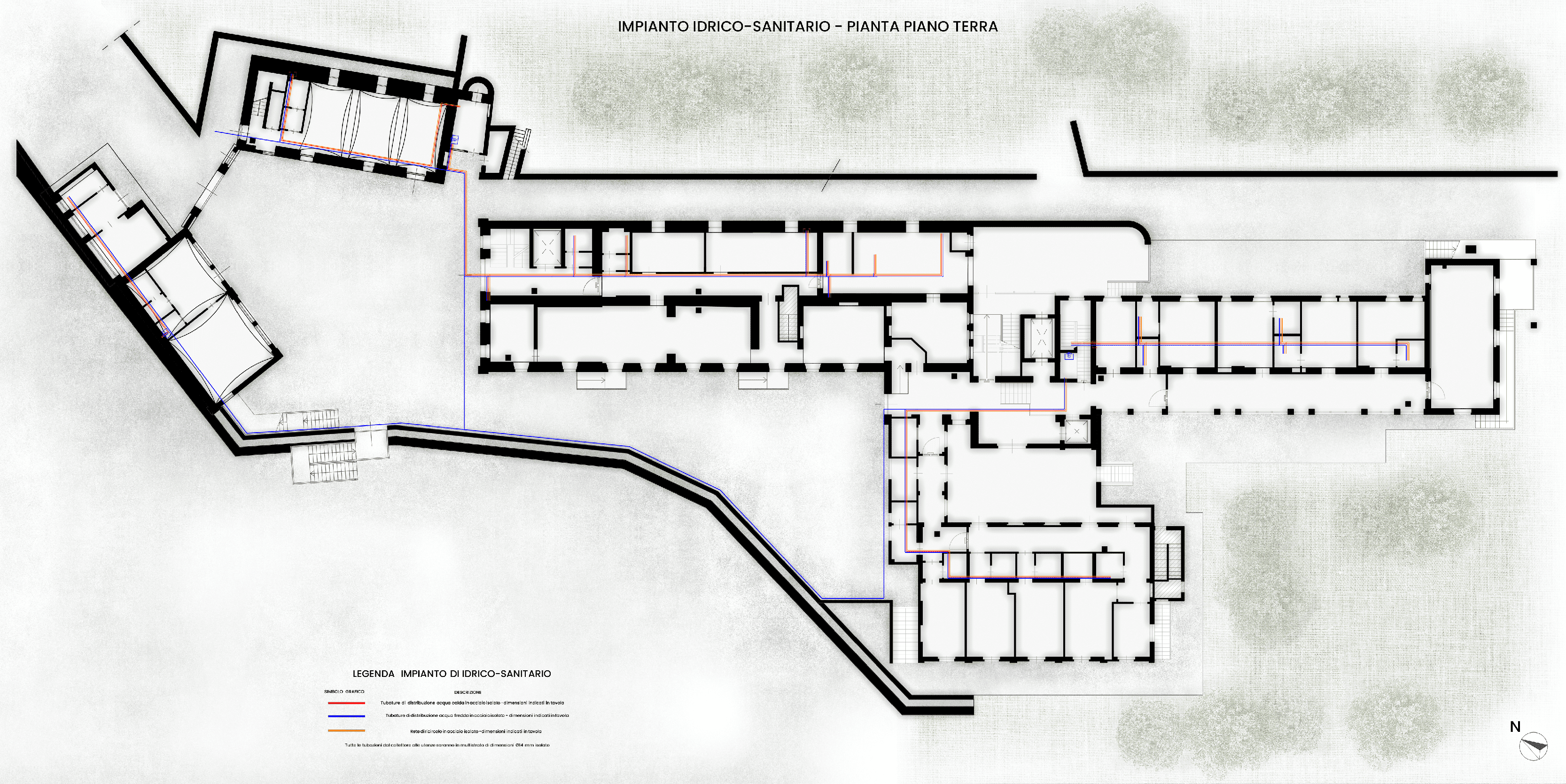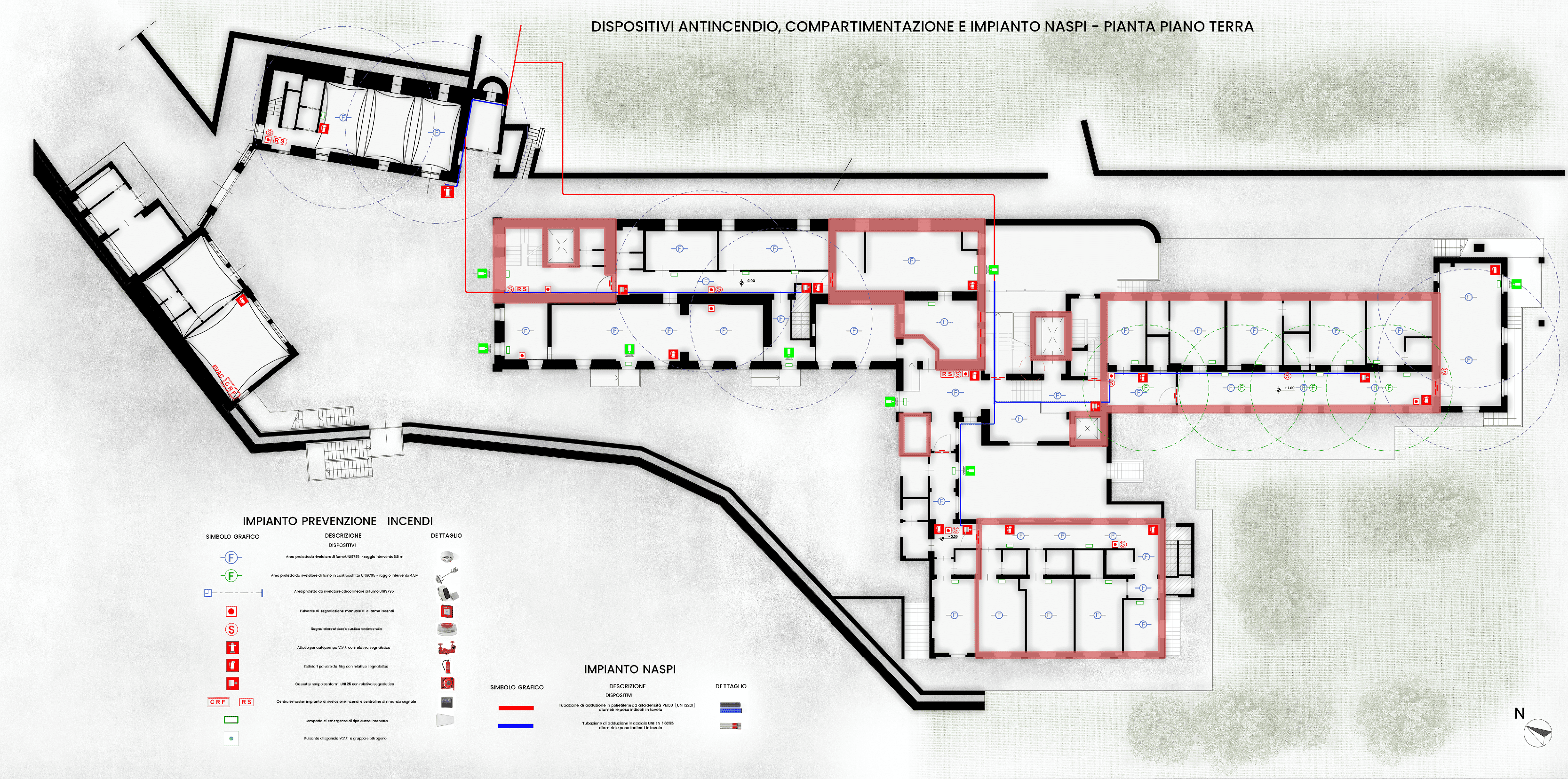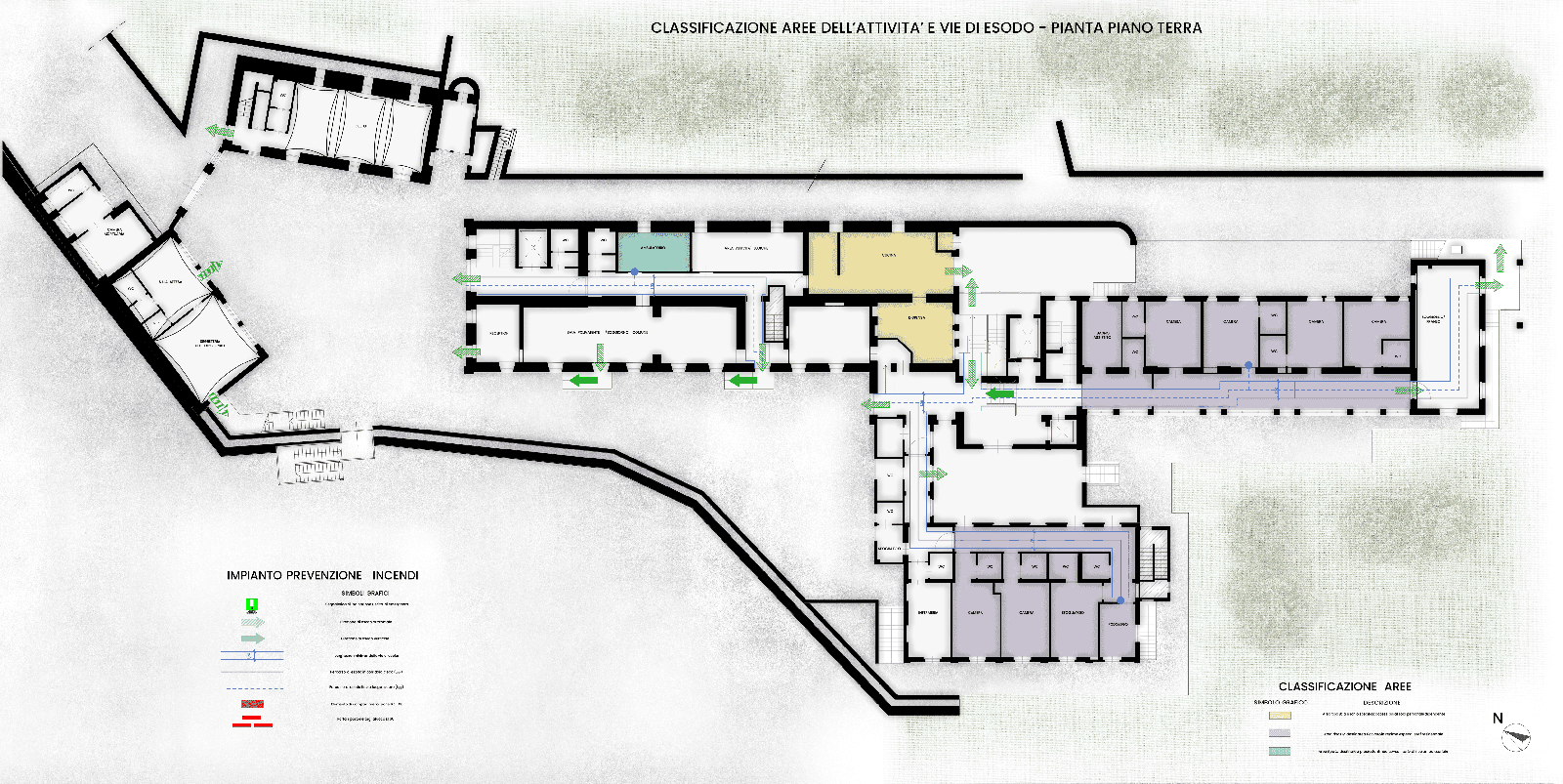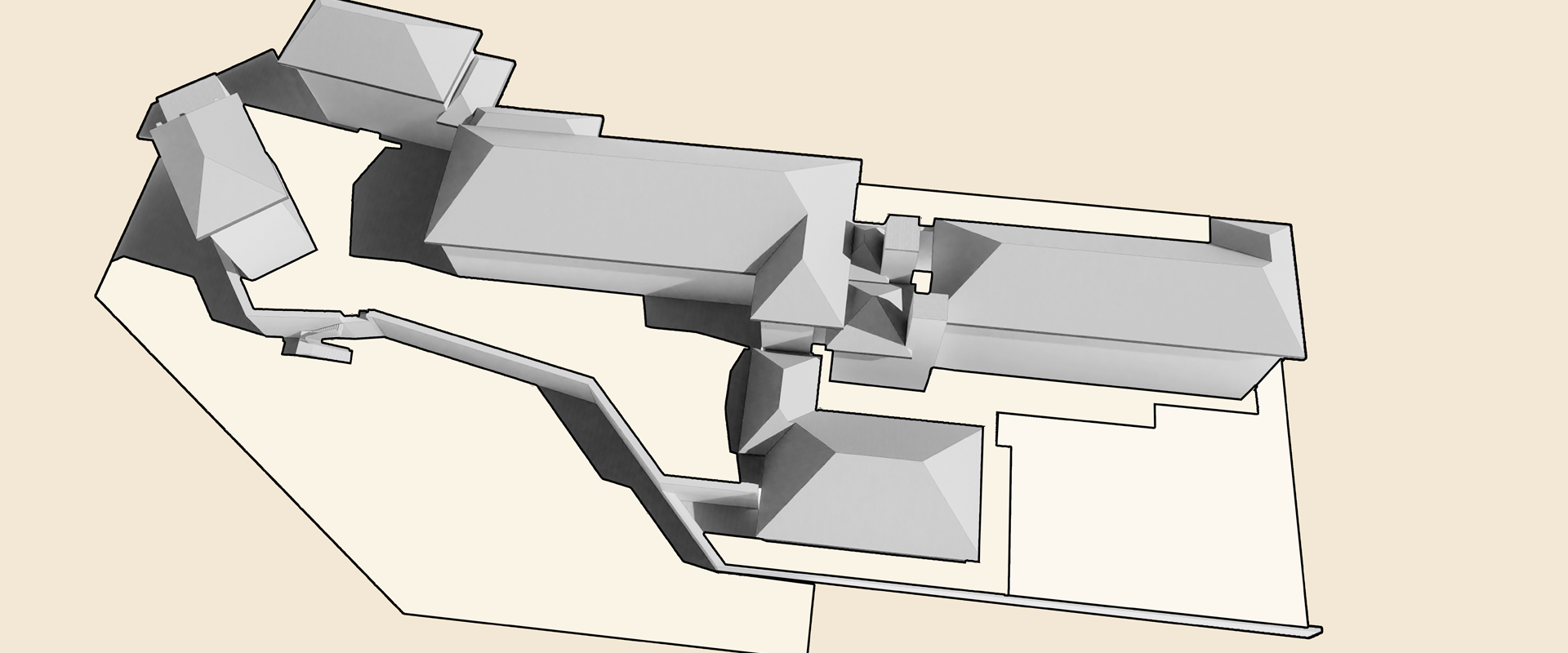Water and Sanitary System and Fire Safety Project
The project includes the redevelopment of the water and sanitary system, and a fire safety plan for activity 68.1.A as per DPR 151/2011, with the upgrading of the active fire protection system (fire hose reels).
Water and Sanitary System
The water and sanitary system have been redesigned to meet the new needs of the current facility, which provides continuous residential care services.
Specifically, the following major tasks were carried out:
- Supply and installation of a boiler for the production of hot sanitary water and the necessary circulators for the system’s operation;
- Supply and installation of the distribution system for hot and cold sanitary water and recirculation, as well as sanitary fixtures, related faucets, and accessories.
Regarding the water supply system, it will be constructed using steel pipes that are appropriately insulated and sized, both for the main distribution and for connections to individual users.

Planimetry first floor | Radiators intervation
Objectives of the Project
The aim of the project was to create a system that meets the following main technical requirements:
- Ease of management and maintenance;
- Flexibility of use;
- High levels of reliability in use;
- High levels of safety in use.
Fire Safety Project
The activity falls under category 68.1.A of DPR 01/08/2011 No. 151, which defines it as follows: ‘Healthcare facilities providing inpatient and/or residential care continuously and/or during the day, nursing homes for the elderly with more than 25 beds up to 50 beds. Healthcare facilities providing specialist care on an outpatient basis, including rehabilitation, instrumental diagnostics, and laboratory services, with a total area over 500 sqm up to 1000 sqm.’
The areas of the healthcare facility, for fire safety purposes, will be classified as follows:
- Type B Area: specific risk areas accessible only to staff (analysis and research laboratories, storages, laundries, etc.) located within the buildings, also partly designated as type C, D1, D2, and F areas.
- Type C Area: areas designated for ambulatory medical services (clinics, specialist centers, diagnostic centers, consulting rooms, etc.) where no overnight stay is expected.
- Type D1: areas designated for inpatient care in a hospital and/or residential setting.
The structure and compartmentalization systems ensure fire resistance requirements compatible with the specific fire load of the project in accordance with the decree of the Minister of the Interior dated March 9, 2007, and at least the following values:
- Underground floors: none;
- Fire height of buildings up to 24 m: R-REI/EI 30. As a precaution, structures and compartmentalization systems guarantee a fire resistance of REI/EI 60.

The healthcare facility is designed to enclose and limit the spread of a potential fire. To this end, the following prescriptions are observed.
Type C areas are divided into compartments, distributed on the same level, with a single surface area not exceeding 2000 sqm.
Type D1 areas are divided into compartments, distributed on the same level, with a single surface area not exceeding 1500 sqm.
Fire protection equipment and active fire protection systems are installed and managed to professional standards in accordance with current regulations.
The healthcare facility will be equipped with an adequate number of portable fire extinguishers, approved by the Ministry of the Interior, evenly distributed throughout the area to be protected; this facilitates their rapid use in case of fire; to this end, extinguishers are located:
- along evacuation routes, near accesses;
- near areas of greater danger.
The portable extinguishers will have a minimum charge of 6 kg and an extinguishing capacity of no less than 34A 144 B.
Extinguishers protecting areas and systems at specific risk will have extinguishing agents suitable for the intended use. Specifically, near electrical panels, the extinguishers will be portable CO2 types.
To comply with UNI 10779 standard, the healthcare facility will be equipped with a fire hose network.
Finally, all areas will be installed with:
- fire alarm signalers of the manual button type suitably distributed and located, in any case, near exits;
- a fixed fire detection and signaling system capable of detecting and remotely signaling the start of a fire.

Building axonometry

